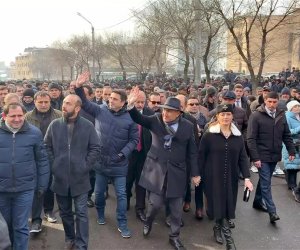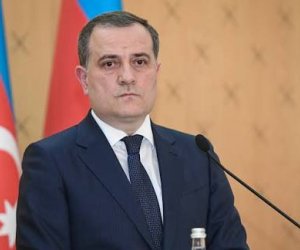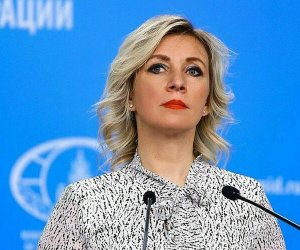Ukraine conflict: Russian aid or Trojan Horse?

Russia's dispatch of a huge convoy of lorries carrying humanitarian aid to east Ukraine has raised suspicions about its intentions, given its support for the rebels fighting the Ukrainian government there.
It is believed the aid is meant primarily for the besieged rebel-held city of Luhansk, home to 425,000 people before the conflict erupted in April and now under government siege.
After waiting more than a week, lorries began crossing the border on 22 August without Ukrainian permission or Red Cross escort, after Russia accused the authorities in Kiev of delaying the convoy's entry unreasonably.
How bad is the situation in Luhansk?
In the words of the International Committee of the Red Cross, the situation in Luhansk and other rebel-held areas is "critical - thousands of people are reported to be without access to water, electricity and medical aid".
On 22 August, Luhansk's city council said on its website (in Russian) that residents had entered their 20th day without electricity or running water, while neither landlines nor mobile phone connections were working.
"The bombardment does not stop," it said as Ukrainian government forces continued their siege of east Ukraine's second city.
Food, medicine and fuel had not been delivered, and wages and benefits had not been paid, for a "long time".
The daytime temperature is was as high as 30C on 22 August, compounding the misery of residents without water and no power to run fans or air conditioning.
With many people seeking refuge in other parts of Ukraine or over the border in Russia, the city's population has dropped to 250,000, the council said earlier in August.
At least 2,119 people had been killed and 5,043 wounded since mid-April, a UN report on 7 August said; 951 civilians have been killed in Donetsk region alone, the official regional authorities said on 20 August.
Official casualty counts only record certified deaths while in some particularly dangerous parts of the war zone, such as Luhansk region, victims are said to have been buried informally, for instance in gardens.
Rebels (and some military sources) accuse the government of concealing the true numbers of soldiers killed.
155,800 people have fled elsewhere in Ukraine while at least 188,000 have gone to Russia.
More than 100 of the 260 or so Russian aid lorries which arrived at the Ukrainian border on 14 August crossed into Ukraine at Izvaryne on 22 August, heading for the city of Luhansk.
The remaining fleet is parked near the Russian town of Kamensk-Shakhtinsky, just over the border, where they have been since leaving the Moscow region on 12 August.
Luhansk is normally an hour's drive up the M04 motorway from Izvaryne, which lies in rebel-held territory.
However, fighting continues in the area and Ukrainian government troops have reportedly cut the M04 into Luhansk at Novosvitlivka, 9km (6 miles) south-east of the city.
What's in the Russian lorries?
The white-painted Kamaz goods lorries are said to be carrying 2,000 tonnes of aid, donated by "Muscovites and residents of the Moscow region", according to the Moscow regional government. It is said to include:
400 tonnes of cereals
100 tonnes of sugar
62 tonnes of baby food
54 tonnes of medical items and medicines
12,000 sleeping bags
69 electricity generators
Foreign journalists who were allowed to look into the lorries at random at Donetsk reported seeing sacks of cereal and sleeping bags.
A Ukrainian border service check on 34 lorries reportedly recorded that they contained 260 tonnes of cereals, salt, water and medicines.
Are the Red Cross involved?
Citing security concerns after continued shelling in Luhansk on 21 August, the Red Cross said it was not part of the convoy "in any way" as it began to roll into Ukraine.
It had previously been involved in protracted negotiations to escort the convoy and distribute the aid.
Is this a Russian Trojan Horse?
With an estimated 20,000 Russian soldiers deployed along the Ukrainian border until recently, Nato chief Anders Fogh Rasmussen told Reuters on 11 August that he saw a "high probability" of a Russian military intervention.
"We see the Russians developing the narrative and the pretext for such an operation under the guise of a humanitarian operation, and we see a military build-up that could be used to conduct such illegal military operations in Ukraine," he said.
French Foreign Minister Laurent Fabius also warned the convoy "could be a cover for the Russians to install themselves near Luhansk and Donetsk and present us with a fait accompli".
However, the first lorries to enter Ukraine were escorted only by rebel fighters, reporters say, and Russia insists it has no hidden military agenda.
Why might Russia want to send troops in?
Russia has long been accused of encouraging the separatists and supplying them with weapons and volunteers. A Russian-supplied anti-aircraft missile was blamed for downing Malaysia Airlines flight MH17 in eastern Ukraine in July, with the loss of 298 lives.
Ukrainian military gains against the rebels, pushing them back towards their strongholds in Donetsk and Luhansk, mean that if there is ever a time for the Russian military to intervene openly, it is probably now.
It would not be the first time Russia's troops have intervened in Ukraine but its annexation of Crimea in March was virtually bloodless, whereas the war in eastern Ukraine has claimed at least 2,119 lives since April.
What does the Kremlin say?
Announcing the the convoy was crossing the border, the foreign ministry said it was a "purely humanitarian mission, which was prepared a long time ago, in an atmosphere of full transparency and in co-operation with the Ukrainian side and the ICRC [Red Cross]".
It accused the Ukrainian government of obstructing the convoy's progress to buy more time for its war on the rebels in Luhansk.
How are the Ukrainians reacting?
President Petro Poroshenko accused Russia of a "flagrant violation of international law" after the aid lorries entered Ukraine without permission.
Security chief Valentyn Nalyvaychenko described the convoy's entry as a "direct invasion" but added that no force would be used against it.
After news broke that Russia was sending a convoy to Luhansk, the Ukrainian authorities organised their own convoy of 75 lorries reportedly carrying 800 tonnes of aid.
About 100 tonnes of the aid, which consisted mainly of fruit and vegetables, was delivered to displaced people in "10 towns in the east", the Red Cross said on 17 August.
Latest news 
More news 



































 Photo
Photo 



 Video
Video 

